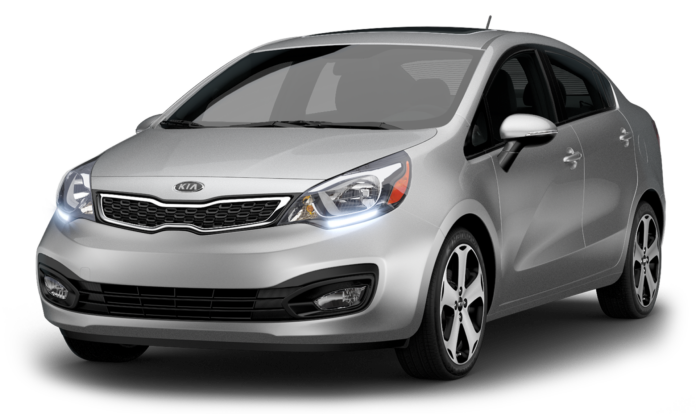The auto industry is offering a growing number of fuel-efficient models — not just hybrids. Auto engineers are getting more and more sophisticated; that said, buying a fuel-efficient car doesn’t have to be rocket science — if you follow these common-sense shopping tips.
1. Analyze Your Needs
Before you get your mind set on any particular make or model, it’s important to take a step back and consider why you drive. Are you looking for a car primarily to commute to and from work? Or is it a second car for quick errands around town? How many passengers do you usually carry? Shopping for a car that meets — but does not exceed — those real needs is an essential first step toward fuel efficiency.
2. Choose a Right-Sized Vehicle
After an honest self-assessment of how you’ll use your car or truck, it’s time to think about the vehicle size (commonly referred to as “segment”): SUV, Minivan, Pickup Truck, Crossover/Wagon, Midsize Sedan, Compact, or Subcompact. Why is choosing a segment important? Because when it comes to fuel efficiency, size matters. Bigger vehicles weigh more than smaller ones — and vehicle weight is the single biggest determinant for fuel efficiency. A heavier vehicle needs more power, and thus uses more fuel to accelerate. You’ll be way ahead of the fuel economy game if you “right-size” your vehicle.
3. Choose a Right-Sized Engine
You might imagine yourself as Jeff Gordon on your morning commute, but the amount of horsepower required for your daily needs is well below racetrack standards. In almost all cases, a smaller engine will result in greater fuel economy. Giving up a few horsepower can mean serious gains in fuel efficiency. The key stats are the number of cylinders and the amount of engine displacement. For maximum fuel efficiency, select a four-cylinder vehicle over a six-cylinder, or six cylinders rather than eight. With engine displacement, as with golf, low scores win.
4. Research the MPG of Specific Models
With a short list of a few models in hand, you can boil down your research to one statistic: the window-sticker MPG rating. Be aware that EPA numbers are likely to be higher than your real-world mileage. Nonetheless, those numbers are very useful as points of comparison. As you walk through the showroom, take note of the MPG ratings of the various vehicles on your shopping list.
5. Consider a Hybrid
When gas-electric hybrids were first introduced to the market, they were viewed as science projects. No longer. In 2007, more than 500,000 shoppers bought a Toyota Prius, Honda Civic Hybrid, Ford Escape Hybrid or one of about a dozen available hybrids. The growing popularity of hybrids is directly related to the technology’s ability to save fuel. In any segment — from compacts to SUVs — hybrids are at the top of the list for fuel efficiency. You’re likely to pay a little bit more for the hybrid system; however, many consumer information organizations, including Consumer Reports, report payback periods on the premium of less than five years for the most efficient hybrids.
6. Consider Diesel
Diesel vehicles operate more efficiently than their gasoline counterparts, because they use higher compression ratios and higher combustion temperatures. The efficiency advantage is enhanced by the fact that a gallon of diesel fuel contains about 10 percent more energy than a gallon of gasoline. These two factors help modern direct-injection diesels achieve roughly 50 percent higher fuel economy than gasoline engines. That’s a big reason why diesel vehicles now account for nearly half of all new vehicle sales in Europe.
7. Avoid Gas-Guzzling Vehicle Options
After you select a vehicle segment, and a specific make and model, you’re still not done. If you have a choice between two-wheel drive or four-wheel drive versions, opt for the two-wheel drive. When is the last time you drove a stick shift? Going with manual transmission will often yield more fuel economy. And remember that anything adding weight to the base vehicle will result in lower fuel efficiency. Rooftop luggage racks, kayak holders, and ski racks add weight and reduce aerodynamics.
8. New Beats Used
As your car ages, so can its ability to squeeze more miles out of a gallon of gasoline. If your budget allows, purchase new rather than used. Newer cars are more likely to use advanced technologies, such as camless systems, low-friction lubricants, idle-stop, and cylinder deactivation, which shuts down cylinders when not needed. Of course, late model used cars can also feature many of these technologies — and can be a great value. Older cars should not be dismissed out of hand. Purchasing used simply means that you need to be careful that the vehicle has been well maintained.
9. Plan Your Shift to Low-Resistance Tires
Don’t just kick the tires. Think about swapping them out with a low-resistance option. The tire offered by the manufacturer is a compromise designed for the widest range of customers. Fuel efficiency aficionados know that tires with lower rolling resistance have a big impact on mpg. See if the dealership will sweeten the deal by making the switch for you. Decreasing the resistance by 20 percent could raise mileage by as much as 5 percent. No matter what kind of tire you use, proper inflation is essential. For every three pounds below recommended pressure, fuel economy goes down by about 1 percent.
10. Maintain Your Investment with Good Driving Habits
The EPA window labels say “your mileage may vary” for a reason. The way you drive is every bit as important as what you drive. First of all, don’t speed. Driving 65 mph instead of 75 mph will increase your fuel economy by about 10 percent. In addition, avoid “jackrabbit” starts and anticipate stops. Flooring the gas pedal and speeding up to a red light is a waste of gas. After spending your hard-earned dollars on a fuel-efficient vehicle, you don’t want to see your investment get wasted through poor automotive behavior.








